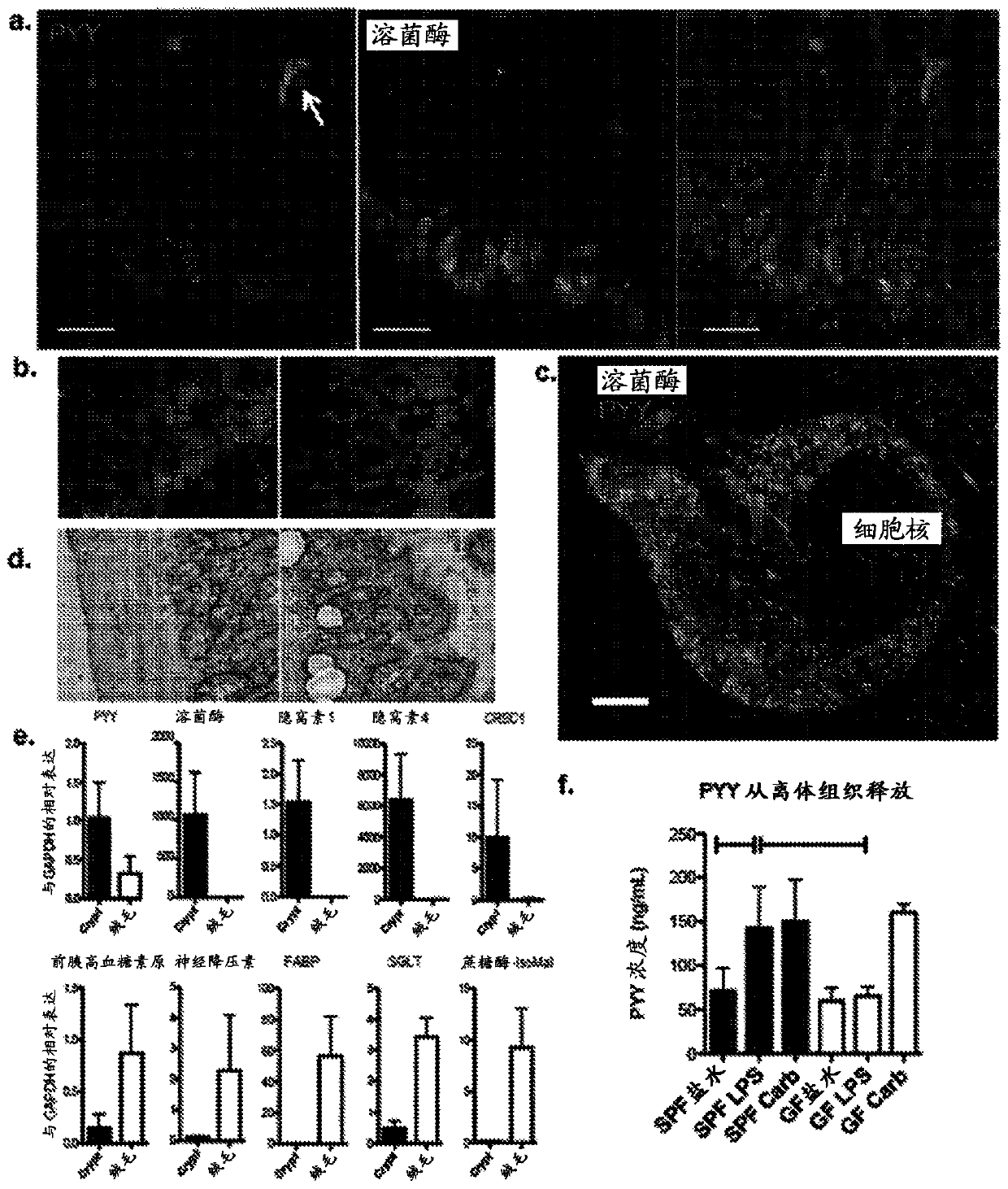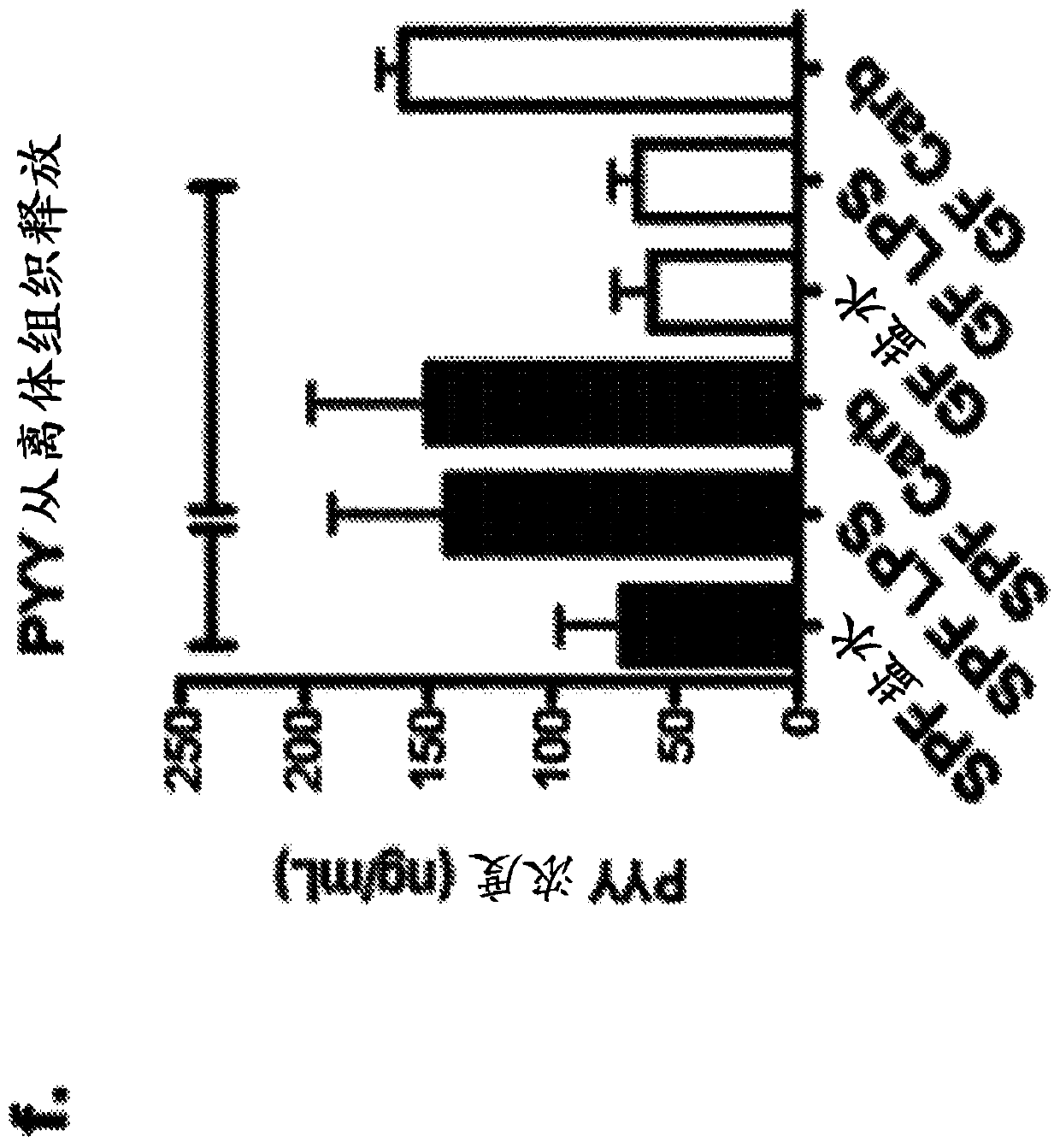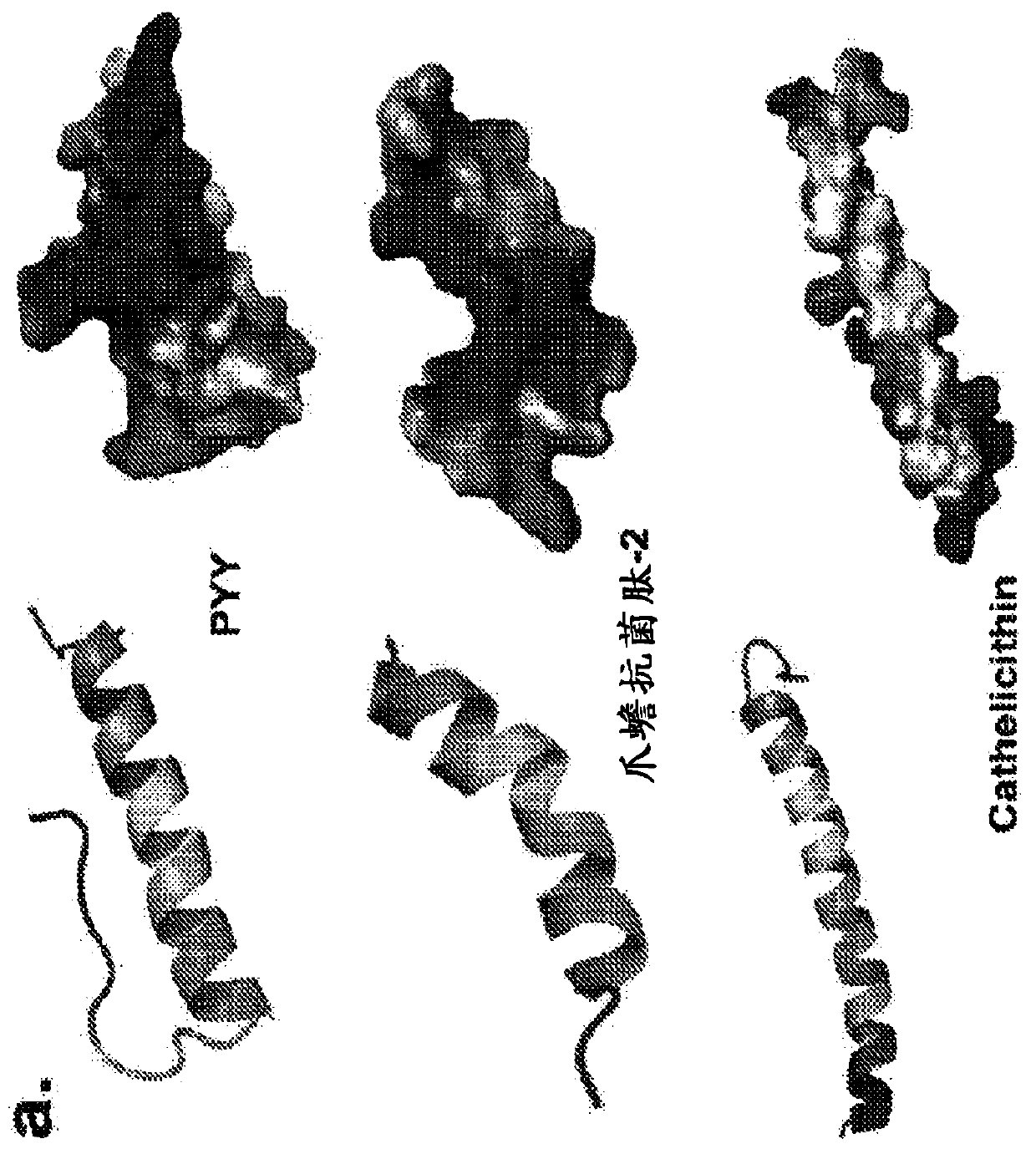Compositions and methods for treating and/or preventing pathogenic fungal infection and for maintenance of microbiome commensalism
A composition, pathogenic technology, applied in the direction of chemical instruments and methods, antifungal agents, pharmaceutical formulations, etc., can solve problems such as excessive and invasive
- Summary
- Abstract
- Description
- Claims
- Application Information
AI Technical Summary
Problems solved by technology
Method used
Image
Examples
Embodiment 1
[0179] Materials and methods
[0180] Animals and Candida challenge models
[0181] All animal experiment protocols were approved by the IACUC at the University of Chicago. Animals were wild-type (WT) or PYY bred on a C57Bl / 6 background - / - Gene-deficient mice and were housed under standard 12:12 light / dark conditions at the University of Chicago. Maintain sterile animals in sterile isolators in our aseptic facility. For studies using Candida spp., animals were maintained in individual BSL2 cages and treated with oral Candida belongs to Clindamycin (PO gavage, 25 mg) and cefoxitin (IM, 50 mg) were administered 2 days prior to challenge. One day before challenge, mice were fasted and administered clindamycin (25 mg) and cortisone acetate (SQ). Mice were gavaged with 200 uL of 1.0 OD600 C. albicans (sc3514) in the morning and provided food 4 hours later. Clindamycin (250 mg / kg BW) was administered on days 0, 2, 4, 6 and 8 until sacrifice. In studies examining oral peptid...
Embodiment 2
[0215] It is envisaged that PYY prevents C. albicans biofilm formation by intercalating into the membranes at the tips of C. albicans hyphae and subsequently permeabilizing these membranes by forming pores, and that the amphipathic nature of the α-helix is important for the formation of this pore. Therefore, AVpeptides 9-11, 23 and 25 (SEQ ID NO: 15-17, 29 and 31) were designed to remove polar or charged amino acid residues from the hydrophobic face and replace them with non-polar residues. Increase the hydrophobic moment of the α-helix ( Figure 12 ). Experiments performed during the development of the embodiments herein showed that these peptides were 13-36 The concentration of Candida albicans greatly inhibited the biofilm formation. The antifungal activity of the peptides described in this application was tested by performing a crystal violet based biofilm assay. In this assay, C. albicans was induced to form biofilms in 96-well plates in the presence or absence of pe...
Embodiment 3
[0244] Experiments were carried out during the development of the embodiments herein to demonstrate the use of PYY-based peptides as prophylactic or therapeutic agents for drug-resistant strains of Candida albicans ( Figure 14 ).
[0245] References
PUM
 Login to View More
Login to View More Abstract
Description
Claims
Application Information
 Login to View More
Login to View More - Generate Ideas
- Intellectual Property
- Life Sciences
- Materials
- Tech Scout
- Unparalleled Data Quality
- Higher Quality Content
- 60% Fewer Hallucinations
Browse by: Latest US Patents, China's latest patents, Technical Efficacy Thesaurus, Application Domain, Technology Topic, Popular Technical Reports.
© 2025 PatSnap. All rights reserved.Legal|Privacy policy|Modern Slavery Act Transparency Statement|Sitemap|About US| Contact US: help@patsnap.com



